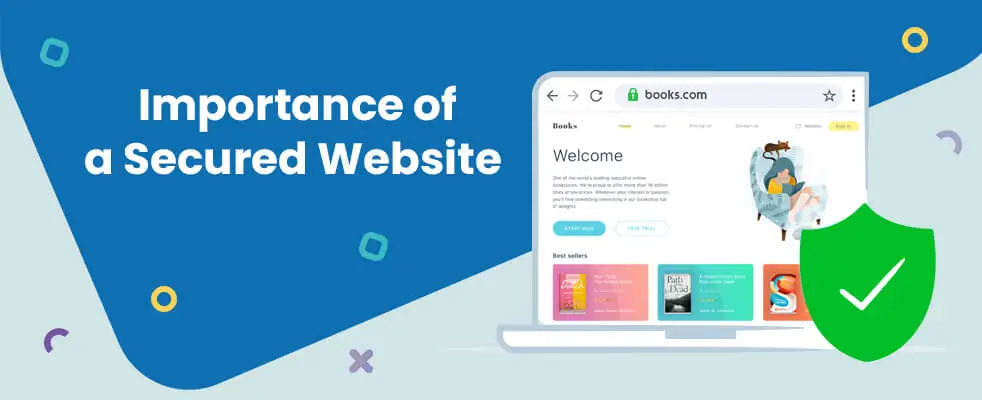
Importance of a Secured Website
Website security involves protecting any website from unauthorized access and hacking. A website portrayed as potentially malicious or untrustworthy can damage the reputation and credibility of a company.
Website security involves protecting your website from unauthorized access and hacking. A hacked website can not only compromise vital information but can also take complete control of the site. The brand and reputation of any business are all at risk if the website is not secured. Cybercriminals can enter the website using the advanced malware that remains hidden, and one might not even notice they are there. Any business owner needs to ensure their website is secure and that customers can trust it. Keeping a website secured can prevent the misuse of customer information. The presence of malware or viruses slows down the loading speed of any website. It is necessary to make sure that the visitors are visiting a safe place on the internet. Because if a website is portrayed as potentially malicious or untrustworthy, it can damage the reputation and credibility of a company.
Problems of having an unsecured website
An unsecured website can be noticed by glancing at the URL of a website. An HTTP protocol with an open lock symbol in the URL of a website shows that the website is unsecured and does not follow the security protocols. Since HTTP does not employ encryption methods, there are chances for cyber threats such as malware and cyberattacks. Hackers can take advantage of this situation, and confidential information can get hacked in a few minutes. Additionally, when a user visits an unsecured website, a warning message is sent to them. No user would want to go through an unsafe website. If you own an unsecured website, it may reduce traffic and eventually stop people from visiting it.
The most common attacks on websites
#1 Cross-Site Scripting (XSS)
The Cross-Site Scripting attack is the most common type of cyberattack. In this type of attack, the users are targeted instead of the web application itself. A hacker inserts malicious code into a website and thereby executes it by a visitor. Users give out private information via the code, which can compromise user accounts, activate Trojan horses, or modify the web site’s content with this fraudulent act.
#2 Distributed Denial-of-Service (DDoS)
The DDoS attack involves flooding the web server with unwanted traffic preventing the regular traffic from accessing the website. One can easily make out when a website is flooded with traffic since during such times, either the website becomes slow or a message showing too many people requesting access to the website appears. In this malicious attack, too much traffic usually comes from a single IP address or the same geolocation. This flood of traffic can include incoming messages and requests for connections.
#3 Brute Force Attack
This type of attack involves guessing user credentials to attack a user’s data. Cybercriminals try guessing passwords by making combinations of letters, numbers, and symbols. Different brute force attacks include Simple, Hybrid, Dictionary, Rainbow, Reverse, and credential stuffing.
How to secure a website?
1. SSL certificate
When the website is secure with an SSL Certificate, it shows a closed lock symbol in the URL at the beginning of the link. Also, it mentions HTTPS before www(World Wide Web) in the URL. Here, HTTPS is an acronym for Hypertext Transfer Protocol Secure. So, when you view a page containing HTTPS, it simply means the website is secure to browse. Hence, it is advisable to use an SSL-Certified website.
2. Install Software Update
Whenever a new update for your web browser is available, update it. As these updates often fix old bugs and repair crashes. Keeping your software up-to-date saves you from being a victim of malicious threats. Using an outdated web browser allows cybercriminals to read your files, passwords, and data that can easily infect your computer.
3. Use web application firewalls (WAF)
A firewall protects web apps by monitoring, filtering, and blocking data that travels to and from the web application. WAF types include network-based, host-based, and cloud-based. It is a security control that protects web systems against malware infections, threats, and vulnerabilities.
Conclusion
Investing in securing your website is worth more than spending huge amounts on repairing issues after a malware attack. Choosing a hosting plan with an SSL certificate for a website is recommended. These simple and basic steps at the beginning of any website creation process can save a lot of time and effort. Why take risks when we have the security remedy? After all, precaution is better than cure!


